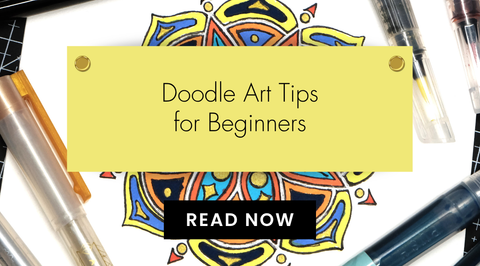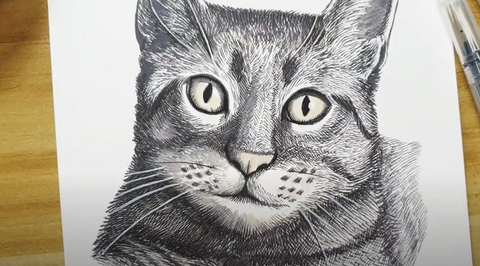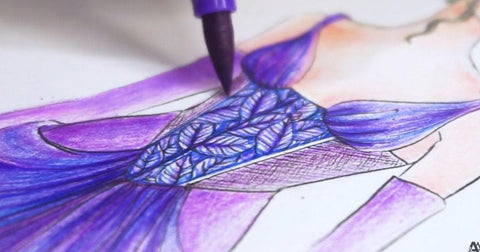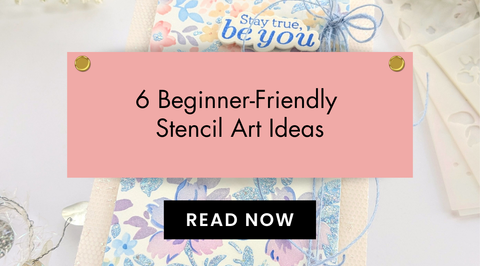5 Tips for Making Realistic Portrait Drawings
Last Updated: October 8, 2025
"One must always draw, draw with the eyes when one cannot draw with a pencil." - Balthus.
When it comes to honing your drawing skills, creating portraits is one of the best ways to do it. Drawing portraits can be a rewarding and captivating artistic endeavor. Whether you're a seasoned artist or just starting out, capturing the essence and personality of a person on paper is a beautiful way to express your creativity.

Monochrome Shading Pencils
If you're an artist looking for ways to get started with the intricate style of drawing portraits, this blog post is for you! Today, we'll explore five valuable tips that will help you create realistic and lifelike portrait drawings. So grab your pencils, settle into your creative space, and let's dive in!
How to Start Drawing Life-Like Portraits
Like many drawing techniques in art, there is no shortcut to creating realistic portraits immediately. We all have to start somewhere - whether it's with stick figures to more nuanced faces, practice is critical. Art is a talent that you have to keep doing every day because consistency is the name of the game. To get to creating that one masterpiece, you must do 100 mediocre ones. So don't let your fear of failure or ugly results get in the way - go and start drawing!

Papers & Surfaces
To help you in your artistic journey, take a look at these five tips for drawing portraits more accurately:
1. Study Human Anatomy
To create convincing and realistic portraits, it's crucial to understand the underlying structure of the human face. Take the time to study facial anatomy, including the placement of facial features, the proportions of the face, and the way light and shadow interact with the different facial planes. Observing and sketching from reference photos or even live models in controlled lighting will enhance your understanding of facial structures and contribute to more accurate drawings.
2. Master the Art of Proportion
Proportions play a vital role in capturing the likeness of a person in a portrait. Pay close attention to the relationships between different features like the eyes, nose, and mouth. One helpful technique is to measure and compare the sizes and distances of these features using a pencil or a tool like a viewfinder. Remember that playing with spaces between the eyes, nose, and mouth can significantly alter the appearance of your portrait, so study them well.

10 Tips for Improving Your Drawing Skills
Additionally, practice drawing basic geometric shapes to establish the overall shape of the head before refining the details. You can practice with proportions by using basic shapes such as circles and triangles to help you map out the areas of the face. By honing your proportion skills, you'll achieve more accurate and realistic portraits.
3. Embrace Value and Tone
Understanding value is key to creating depth and dimension in your portraits. Experiment with shading techniques to convey the play of light and shadow on the face. Observe the subtle shifts in value and tone across different areas, paying attention to highlights, mid-tones, and shadows.
Utilize various shading pencils, such as hard and soft leads, to achieve a full range of values. This interplay of light and dark will add a realistic three-dimensional quality to your drawings. A tip is to remember that certain parts of the face are generally lighter, such as the tip of the nose, where oil builds up, the upper lip area, and the t-zone regions of the face.

Pencils
4. Capture Expressions and Emotions
As mentioned before, portraits are a way of sketching out the essence of someone in a tangible form. Beyond the technical aspects, portraits are a means of capturing the unique expressions and emotions of the subject. Take the time to observe and understand the individual's personality and translate it into your artwork.
Focus on the eyes, which often reveal the most about a person's character. Pay attention to details like wrinkles, creases, and subtle shifts in the mouth and eyebrows. These nuances will breathe life into your drawings, making them more realistic and engaging.
5. Sketch Regularly and Seek Feedback
Practice doesn't make perfect. Practice makes permanent! Regular drawing sessions dedicated to portraiture will improve your skills and build your confidence. It's also valuable to seek feedback from fellow artists or art communities.

Monochrome Shading Pencils
Constructive criticism can provide fresh perspectives and help you identify areas for improvement. Embrace challenges, learn from your mistakes, and keep pushing your boundaries. Over time, your realistic portrait drawings will continue to evolve and amaze others!
Drawing Materials You Need for Portraits
Sketching usually only requires a few materials. All you really need are some high-quality materials, such as sturdy paper, shading pencils, an eraser, a fine liner pen for adding details, and some coloring mediums, such as alcohol markers. Alcohol markers and watercolor paints are actually the best mediums to work with, as these can give you beautiful and professional-looking blends.
Create Captivating Portraits With These Handy Tips!
Ready to make awe-striking portraits? Whether it's your loved one, a family member, a celebrity, or a commission by a client, knowing how to do portraits is one of the most essential skillsets an artist should have. By practicing daily and working at it, you can conquer this drawing style in no time!

Artistry by Altenew | Premium Art Supplies and Materials
For more inspiration and art tips like these, check out our Creative Corner. You must just learn something new today!






